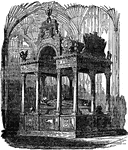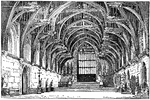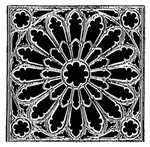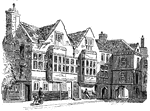Clipart tagged: ‘Westminster’

Westminster Abbey
A large church in Westminster, London, England, located just to the west of the Palace of Westminster.…

Coronation Chair in Westminster Abbey
"Beneath the seat is the celebrated Scottish Stone of Scone, which was carried away from Scotland by…

Houses of Parliament, Westminster; Plan of Principal Floor
This is the Plan of Principal Floor of the Houses of Parliament in Westminster, England. Other wise…

Queen Elizabeth's Tomb
"Queen Elizabeth's Tomb: In the North Aisle of Henry VII's Chapel, Westminster Abbey." — Chambers,…

Interior of Westminster Hall
"Next to the Tower and the Abbey, Westminster Hall, adjoining the House of Parliament, is the most historic…




